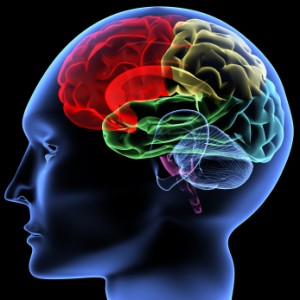Sleep Apnea
Obstructive Sleep Apnea, Central Sleep Apnea, Mixed Sleep Apnea, Complex Sleep Apnea, and Upper Airway Resistance SyndromeTypes of Sleep Apnea
Obstructive Sleep Apnea
Obstructive sleep apnea (OSA) is the most common type of sleep apnea and it is caused by an obstruction of the upper airway. It is characterized by repetitive pauses in breathing during sleep, despite the effort to breath, and is also associated with a reduction in blood oxygen saturation. These pauses in breathing, are called “apneas” and usually last anywhere from 10-40 seconds.
 Muscle tone of the body ordinarily relaxes during sleep, and the airway of the throat is composed of walls of soft tissue, which can collapse, causing one’s breathing to be obstructed during sleep. Although very mild OSA is considered to be within the bounds of normal and natural sleep, many individuals experience various episodes of OSA at some point in their life, with a small percentage of people afflicted with chronic, severe OSA.
Muscle tone of the body ordinarily relaxes during sleep, and the airway of the throat is composed of walls of soft tissue, which can collapse, causing one’s breathing to be obstructed during sleep. Although very mild OSA is considered to be within the bounds of normal and natural sleep, many individuals experience various episodes of OSA at some point in their life, with a small percentage of people afflicted with chronic, severe OSA.
Most will experience episodes of OSA for only a short period of time. This can be the result of an upper respiratory infection that causes nasal congestion, along with swelling of the throat, or tonsillitis that temporarily produces very enlarged tonsils. Temporary spells of OSA syndrome may also occur in individuals who are under the influence of certain drugs that relax body tone excessively and interfere with normal arousal from sleep mechanisms. (Most commonly and widely used is alcohol)
An individual with OSA is rarely aware of having difficulty breathing, even upon awakening. Others witnessing the individual during apnea episodes often recognize it as a problem before the sufferer does, and or it is suspected by a health care professional because of its effects it has on the body. OSA is commonly accompanied with snoring, however, other symptoms may be present for years or even decades without identification. During this time the sufferer may become conditioned to the daytime sleepiness and fatigue associated with significant levels of sleep disturbance. Sufferers who generally sleep alone are often the most at risk because they remain undiagnosed longer.
Other common signs of OSA include unexplained daytime sleepiness, restless sleep, and loud snoring (apnea episodes of silence followed by gasps for air). Less common symptoms are morning headaches; insomnia; trouble concentrating; mood changes such as irritability, anxiety and depression; forgetfulness; increased heart rate and/or blood pressure; decreased sex drive; unexplained weight gain; increased urination and/or nocturia; frequent heartburn or gastroesophageal reflux disease; and heavy night sweats.
Central Sleep Apnea
In people afflicted by Central Sleep Apnea (CSA), their basic neurological controls for breathing malfunction and fail to give them signal to inhale, causing the individual to miss one or more cycles of breathing. If the pause in breathing is long enough, the percentage of oxygen in the circulation will drop to a lower than normal level (hypoxemia) and the concentration of carbon dioxide will build to a higher than normal level (hypercapnia). In turn, these conditions of hypoxia and hypercapnia will trigger additional effects on the body.
 During central apnea episode’s, the central respiratory drive is absent, and the brain does not respond to changing blood levels of the respiratory gases. No breath is taken despite the normal signals to inhale. The immediate effects of central sleep apnea on the body depend on how long the failure to breathe endures. At its worst, central sleep apnea may cause sudden death. In some cases, drops in blood oxygen may trigger seizures, even in the absence of epilepsy. In people with diagnosed epilepsy, the hypoxia caused by apnea may trigger seizures that had previously been well controlled by medications. In other words, a seizure disorder may become unstable in the presence of CSA.
During central apnea episode’s, the central respiratory drive is absent, and the brain does not respond to changing blood levels of the respiratory gases. No breath is taken despite the normal signals to inhale. The immediate effects of central sleep apnea on the body depend on how long the failure to breathe endures. At its worst, central sleep apnea may cause sudden death. In some cases, drops in blood oxygen may trigger seizures, even in the absence of epilepsy. In people with diagnosed epilepsy, the hypoxia caused by apnea may trigger seizures that had previously been well controlled by medications. In other words, a seizure disorder may become unstable in the presence of CSA.
In adults with coronary artery disease, a severe drop in blood oxygen level can cause angina, arrhythmias, or heart attacks (myocardial infarction). Longstanding recurrent episodes of apnea, over months and years, may cause an increase in carbon dioxide levels that can change the pH of the blood enough to cause a metabolic acidosis.
Adults suffering from congestive heart failure are at risk for a form of central sleep apnea called Cheyne-Stokes respiration. This is periodic breathing with recurrent episodes of apnea alternating with episodes of rapid breathing. In those who have it, Cheyne-Stokes respirations occur while both awake and asleep. There is good evidence that replacement of the failed heart (heart transplant) cures central sleep apnea in these patients. The uses of some medications that are respiratory stimulants decrease the severity of apnea in some patients.
There is also an association between atrial fibrillation (AF) and central sleep apnea. A study found that the prevalence of atrial fibrillation among patients with idiopathic central sleep apnea was significantly higher than the prevalence among patients with obstructive sleep apnea or no sleep apnea
Mixed Sleep Apnea
Some people with sleep apnea have a combination of both types. When obstructive sleep apnea syndrome is severe and longstanding, episodes of central apnea sometimes develop. The exact mechanism of the loss of central respiratory drive during sleep in OSA is unknown but is most commonly related to acid-base and CO2 feedback malfunctions stemming from heart failure. There is a constellation of diseases and symptoms relating to body mass, cardiovascular, respiratory, and occasionally, neurological dysfunction that have a synergistic effect in sleep-disordered breathing. In some cases, a side effect from the lack of sleep is Excessive Daytime Sleepiness (EDS) where the subject has had minimal sleep and this extreme fatigue over time takes its toll on the subject. The presence of central sleep apnea without an obstructive component is a common result of chronic opiate use (or abuse) owing to the characteristic respiratory depression caused by large doses of narcotics.
Complex Sleep Apnea
Researchers have recently described Complex Sleep Apnea as a novel presentation of sleep apnea. Patients with complex sleep apnea exhibit OSA, but upon application of positive airway pressure (CPAP) the patient exhibits persistent central sleep apnea. This central apnea is most commonly noted while on CPAP therapy after the obstructive component has been eliminated. This has long been seen in sleep laboratories and has historically been managed either by CPAP or Bilevel therapy. Adaptive servo-ventilation (ASV) modes of therapy have been introduced to attempt to manage this complex sleep apnea. Studies have demonstrated marginally superior performance of the adaptive servo ventilators in treating Cheyne-Stokes breathing; however, no longitudinal studies have yet been published, nor have any results been generated that suggest any differential outcomes versus standard CPAP therapy.
Upper Airway Resistance Syndrome
Upper Airway Resistance Syndrome (HUARS) is sleep-breathing disorder characterized by partial airway resistance to breathing during sleep. UARS can be described as a “lighter” sleep-breathing disorder than Obstructive Sleep Apnea. People with UARS have some difficulty breathing during sleep, which makes them tired during the day.
UARS, like obstructive sleep apnea, involves airway resistance to breathing during sleep. The airway partially collapses, which affects breathing, but not enough to reduce blood oxygen levels. Although not as severe or obvious as OSA, this sleep disorder not only interferes with sleep, but also negatively impacts health.
There is still some controversy in the medical community as to the existence and relevance of UARS. Among those who do recognize this condition, some prefer to label it as a mild form of sleep-disordered breathing. Many people with UARS have no idea that they have a sleep-breathing disorder. They may not snore dramatically enough to awaken their bed partners, or at all. They may not experience as much daytime sleepiness as those with OSA. Instead, they feel fatigued or may be diagnosed with other conditions such as Depression or Sleep-Onset Insomnia.
A special type of sleep study is required to positively identify upper airway resistance. This type of polysomnography not only records several bodily functions, including respiratory rate, heart rate, and blood-oxygen levels, but also Pes measurement or esophageal pressure. Pes measures fluctuations in pressure around the esophagus that are associated with UARS. Because apneas and hypopneas detected through the use of standard polysomnography are either absent or minimal, Pes measurement is the gold standard diagnostic test for UARS.
